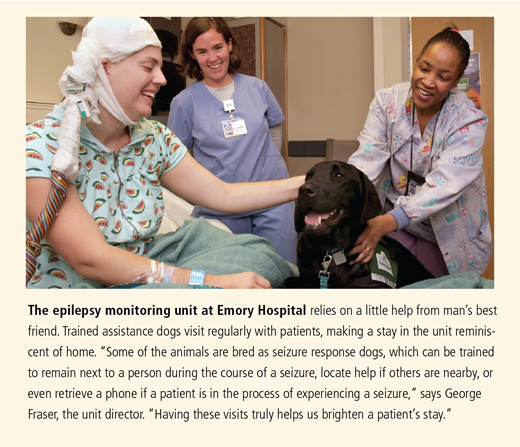When seizures are desired
by Lance Skelly
Brenda Free has suffered from epilepsy for more than 25 years, since the birth of her first child.
Her condition has caused lapses of memory and a repeatedly dislocated shoulder from seizures. She even lost her job as a materials planner when she was unable to manage the disease.
"For years, I took medication, which helped some," says Free. "But I never really wanted to believe or face the reality that the seizures I was experiencing were really epilepsy. I did my best to ignore and hide it."
But on a summer night in 2007, Free got a wake-up call she couldn't ignore. When she started to seize, a friend called 9-1-1. The first responder on the scene was a police officer who arrived in advance of the ambulance. The officer, unaware Free's violent convulsions were due to epilepsy, used a taser gun to subdue her.

"After that, I just knew it was time to take control of my condition and not ignore it or sleep it away," Free says. "I'm thankful for that night because it was a turning point."
After Free consulted with her physician in Savannah and did extensive research about epilepsy on the web, she wound up at Emory. Recently admitted to an epilepsy monitoring unit in Emory University Hospital, she hopes to pinpoint the cause of her seizures.
|
|
The unit, which opened in April, helps physicians better identify the source of epileptic seizures. That, in turn, can lead to more effective outcomes and treatments.
More than 40 million people currently suffer from epilepsy, a neurologic disorder that causes abnormal electrical activity in the brain resulting in recurrent seizures. The condition affects children, adults, and seniors, and it can be present at birth or brought on later by a head injury, brain tumor, or stroke. In many cases, the cause cannot be discovered.
The epilepsy monitoring unit at Emory allows for continuous video and EEG monitoring of electrical activity in the brain. While a standard EEG test typically lasts 30 minutes and offers only a brief snapshot of a brain's activity within a limited time frame, continuous monitoring can improve diagnostic accuracy. Continuous monitoring is particularly helpful when routine EEG recordings fail to indicate a diagnosis, particular seizure type, or location of onset.
According to Emory neurophysiologist Suzette LaRoche, a patient with epilepsy may experience many different types of seizures. The ability to accurately diagnose those types aids in selecting effective treatment options including medication and surgery.
"For many epilepsy patients, the only way to offer better treatment is to monitor them and study what occurs during an actual seizure," LaRoche says. "The more we can learn about an individual patient's seizures, the better our chances of being able to offer better seizure control and maybe even reduce or eliminate certain medications that cause severe drowsiness, impaired thinking, or other adverse physical effects. This is probably the only place that patients actually hope for and want to have a seizure."
That's true for Brenda Free. "Now I am like many other epilepsy patients who come to Emory just hoping to have a seizure," Free says, "because that is the only way to unlock what has to this day been a mystery."



